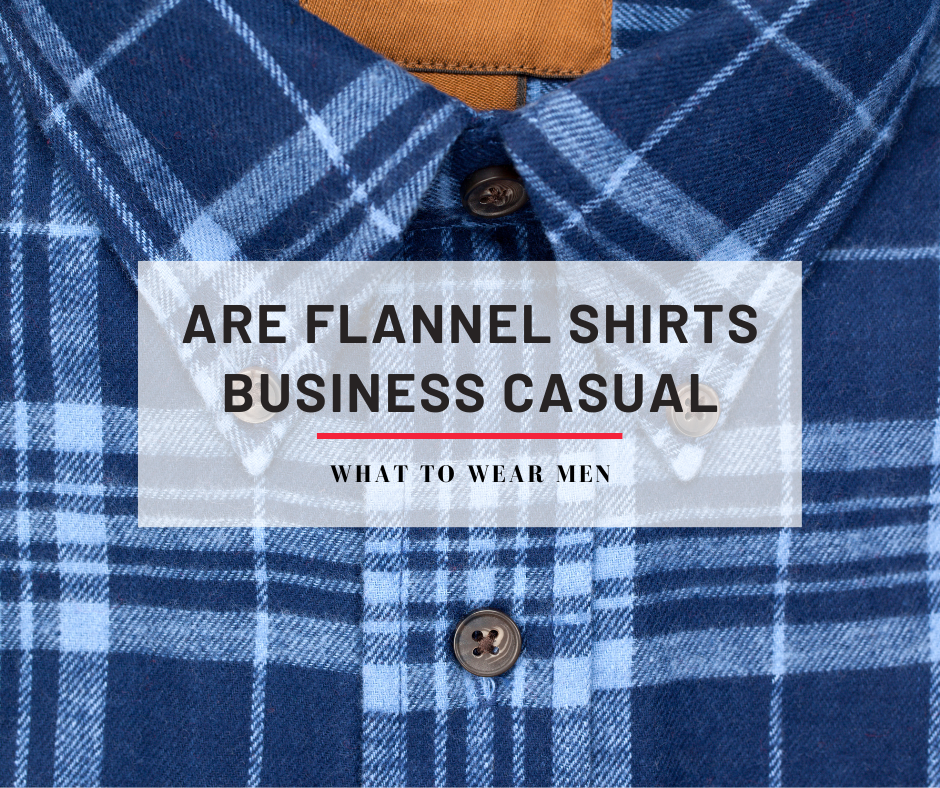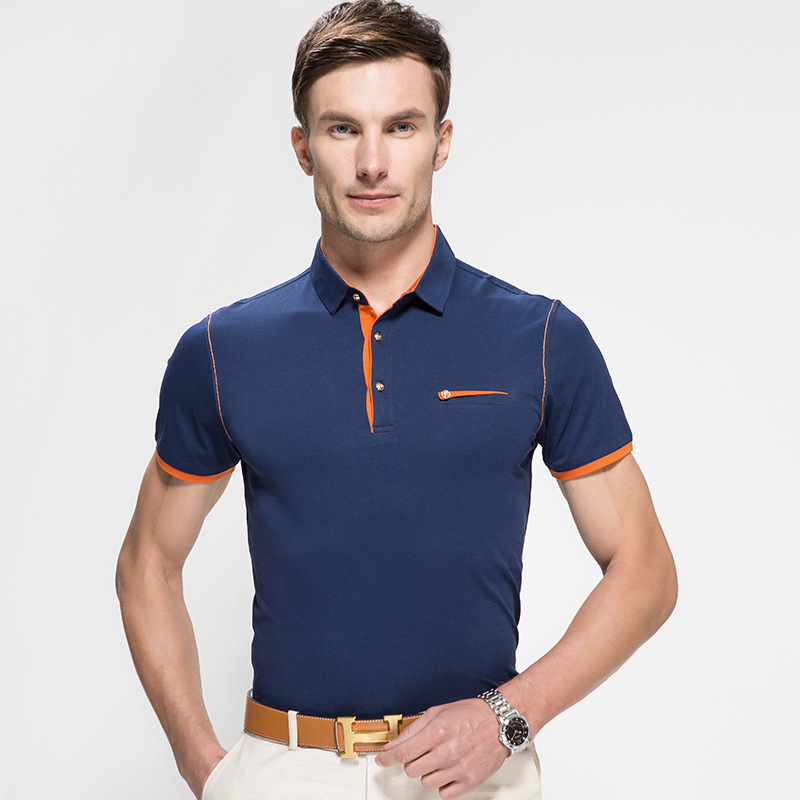Is a flannel shirt business casual? The answer, surprisingly, isn’t a simple yes or no. This question delves into the nuanced world of workplace dress codes, exploring the fine line between professional and relaxed attire. We’ll examine the various types of flannel shirts, the context of your workplace, and how to style a flannel for a business casual environment to help you confidently navigate this sartorial challenge. From the weight and pattern of the fabric to the overall fit and accessories, we’ll cover all the crucial aspects to help you determine if a flannel shirt fits the bill.
Understanding business casual itself is key. Different industries and companies have varying interpretations. Some workplaces embrace a more relaxed approach, while others maintain a stricter adherence to traditional business attire. We’ll analyze these differences and provide clear examples of what’s acceptable and unacceptable, offering practical advice to ensure you always present a professional image, regardless of your chosen shirt.
Defining “Business Casual”
Business casual is a dress code that aims to strike a balance between professional and relaxed attire. It’s designed to foster a more comfortable and approachable work environment while still maintaining a level of professionalism appropriate for a business setting. However, the interpretation of “business casual” can vary significantly depending on several factors, leading to considerable ambiguity and occasional misunderstandings.
Business casual attire generally avoids overly formal clothing such as suits and ties, but it also steers clear of overly casual items like jeans, t-shirts, and sneakers (unless explicitly permitted by the company culture). The specific acceptable range falls within a spectrum that depends heavily on the industry, company culture, and even the specific role within a company.
Variations in Business Casual Across Industries
The interpretation of business casual differs markedly across industries. In a creative agency, for instance, business casual might encompass a wider range of styles, including more casual shirts, stylish jeans (possibly dark-wash and without distressing), and even fashionable sneakers. In contrast, a financial institution or law firm will likely adhere to a stricter interpretation, favoring khakis or dress pants, button-down shirts (possibly with a company logo), and polished loafers or closed-toe shoes. A tech company might fall somewhere in between, allowing for a greater degree of individuality and casualness while still expecting a generally neat and presentable appearance. The level of formality often reflects the company’s client base and the image it wants to project.
Factors Influencing the Interpretation of Business Casual
Several factors contribute to the diverse interpretations of business casual. Company culture plays a significant role; some companies foster a more relaxed and informal environment, while others maintain a more traditional and formal atmosphere. Geographic location can also influence dress code perceptions; warmer climates might see more open-toed shoes and lighter fabrics than colder climates. The specific role within a company influences the appropriateness of attire; a senior executive might be expected to dress more formally than a junior employee, even within the same business casual framework. Finally, the occasion—a client meeting versus an internal team brainstorming session—can also dictate the level of formality.
Examples of Acceptable and Unacceptable Business Casual Attire
The following table provides examples of attire that generally falls within or outside the boundaries of acceptable business casual:
| Acceptable | Acceptable | Unacceptable | Unacceptable |
|---|---|---|---|
| Khakis or dress pants | Button-down shirt or blouse | Jeans (unless explicitly permitted) | T-shirts or tank tops |
| Neatly pressed skirt or dress | Sweater or cardigan (appropriate style) | Flip-flops or sandals | Athletic wear or sportswear |
| Polos (in good condition) | Loafers, oxfords, or dress shoes | Ripped or distressed clothing | Visible undergarments |
| Blazer or sport coat (optional) | Clean and polished accessories | Clothing with offensive graphics | Overly revealing clothing |
Flannel Shirts

Flannel shirts, once relegated to rugged outdoor wear, have experienced a significant style evolution, making their way into modern business casual wardrobes. Their versatility lies in the diverse range of weights, patterns, and fabrics available, allowing for a spectrum of professional appropriateness. Understanding these variations is key to selecting a flannel that meets the standards of a business casual environment while maintaining a stylish and confident look.
Flannel Shirt Types and Characteristics
Flannel shirts are categorized by several key characteristics, influencing their suitability for business casual settings. Weight, measured in ounces per square yard (oz/sq yd), determines the shirt’s warmth and drape. Lighter weight flannels (4-6 oz/sq yd) are more suitable for warmer climates and offer a more refined look, while heavier weights (8 oz/sq yd and above) are better suited for colder weather but might appear too casual for some business casual environments. Fabric composition also plays a crucial role. 100% cotton flannels offer breathability and softness, while blends with wool or synthetic fibers can enhance durability and warmth. Finally, pattern and color significantly impact the shirt’s formality. Subtle patterns and darker, solid colors generally lend themselves better to professional settings.
Examples of Business Casual Flannel Shirts
A dark navy or charcoal gray flannel shirt in a lightweight cotton, featuring a subtle plaid or even a solid color, would be a suitable choice for a business casual environment. Imagine a shirt with a finely woven, almost imperceptible check pattern, in a deep burgundy hue. This would pair well with chinos or dark-wash jeans and a blazer, creating a polished yet comfortable look. Alternatively, a lighter weight flannel in a muted blue or green, with a very small, understated plaid, could be worn with dress pants and a sweater vest for a more layered, sophisticated appearance. Avoid bright, bold colors or large, eye-catching patterns, which can detract from a professional image.
Flannel Shirt Suitability for Business Casual
The appropriateness of a flannel shirt for business casual depends on several factors. A key element is the overall weight and fabric of the shirt. Lighter weight flannels in natural fabrics like cotton are generally more suitable than heavier, bulkier options. The pattern and color are equally important; subtle patterns and muted colors are more appropriate than bold, loud prints or bright, vibrant hues. The fit of the shirt also matters; a well-fitting shirt that isn’t too baggy or oversized will present a more professional appearance. Finally, consider the overall context of the workplace. A more traditional or conservative workplace might require a more subdued flannel shirt compared to a more relaxed or creative environment.
Flannel Shirt Styles and Business Casual Suitability
The following list details various flannel shirt styles and their suitability for business casual settings:
- Lightweight Cotton Flannel (Subtle Plaid): Highly suitable. Offers a refined look and comfortable feel.
- Solid Color Flannel (Dark Hues): Very suitable. Provides a clean, professional appearance.
- Heavyweight Flannel (Bold Plaid): Less suitable. Generally too casual for most business casual environments.
- Flannel Shirt with Embroidered Details: Depends on the detail. Subtle embroidery might be acceptable; large or flashy embroidery is generally inappropriate.
- Plaid Flannel (Muted Colors): Moderately suitable. The appropriateness depends on the size and boldness of the plaid.
Contextual Factors

The appropriateness of a flannel shirt within a business casual dress code is highly dependent on several contextual factors, primarily the specific workplace culture and the occasion. A flannel shirt might be perfectly acceptable in one environment but entirely inappropriate in another. Understanding these nuances is crucial for navigating the complexities of business casual attire.
Workplace culture significantly impacts the acceptability of flannel shirts. In a creative agency or tech startup, where a more relaxed and informal atmosphere prevails, a well-maintained flannel shirt might be a perfectly acceptable part of the business casual dress code. However, in a more traditional law firm or financial institution, the same shirt might be considered too casual, even if the overall dress code is labeled “business casual.” The key lies in observing the typical attire of colleagues and superiors to gauge the prevailing standards.
Flannel Shirt Suitability Across Occasions
The suitability of a flannel shirt also varies depending on the specific occasion. A client meeting, for example, generally calls for a more polished and professional appearance. While a neatly pressed, dark-colored flannel shirt *might* be acceptable in some industries, it’s generally advisable to opt for a more formal shirt for such an important event. In contrast, a team lunch or casual office workday presents a more relaxed environment where a flannel shirt, especially in a neutral color and good condition, might be entirely appropriate. The context dictates the level of formality required.
The Influence of Color and Condition
The color and condition of the flannel shirt are also crucial factors. Darker colors, such as navy, charcoal gray, or deep greens, tend to project a more professional image than brighter, bolder colors or patterns. Furthermore, the shirt must be in excellent condition – clean, wrinkle-free, and free of any visible damage. A worn, faded, or stained flannel shirt, regardless of the workplace or occasion, is unlikely to be considered business casual appropriate.
Scenarios and Flannel Shirt Acceptability
| Scenario | Workplace | Occasion | Flannel Shirt Acceptable? |
|---|---|---|---|
| Daily Work | Tech Startup | Office Workday | Yes (if clean, well-fitting, and appropriate color) |
| Client Meeting | Law Firm | Presentation | No (too casual; a button-down shirt is recommended) |
| Team Lunch | Marketing Agency | Informal Gathering | Yes (depending on the overall atmosphere) |
| Important Meeting | Financial Institution | Negotiations | No (consider a more formal shirt and blazer) |
Alternatives to Flannel Shirts: Is A Flannel Shirt Business Casual

Flannel shirts, while comfortable and stylish, may not always be the most appropriate choice for every business casual setting. Their inherent casualness can sometimes clash with the slightly more polished look often desired in professional environments. Therefore, understanding suitable alternatives is crucial for navigating the nuances of business casual dress. This section explores viable options, compares their formality levels, and weighs their pros and cons against flannel shirts.
Alternative Shirt Options for Business Casual Attire
Several shirt types offer a comparable level of comfort and style to flannel shirts while maintaining a more polished appearance suitable for business casual settings. These alternatives cater to various preferences and situations, ensuring a versatile wardrobe for diverse professional contexts.
- Oxford Cloth Button-Down Shirts: These shirts offer a crisp, clean look with a subtle texture. The button-down collar adds a touch of formality, making them ideal for most business casual environments. They come in a range of colors and patterns, allowing for personalization.
- Chambray Shirts: A lightweight, durable fabric with a slightly textured appearance, chambray shirts provide a relaxed yet refined look. Their versatility makes them suitable for a wide range of business casual settings.
- Cotton Twill Shirts: Similar to chambray, cotton twill offers a slightly more structured feel and a more polished look. They are durable and wrinkle-resistant, making them a practical choice for busy professionals.
- Knit Polos: For a more relaxed business casual setting, a high-quality knit polo shirt in a neutral color can be a comfortable and stylish alternative. Ensure the polo is well-fitting and free of logos or graphics.
Comparison of Formality Levels
The formality of a shirt largely depends on the fabric, style, and color. Flannel shirts, particularly those with bolder patterns or heavier weights, generally fall on the more casual end of the business casual spectrum. Oxford cloth button-downs and cotton twill shirts, on the other hand, are generally considered more formal, while chambray shirts occupy a middle ground. Knit polos are the most casual of the options listed.
Pros and Cons of Different Shirt Choices in Business Casual Settings
Choosing the right shirt depends on the specific workplace culture and the desired level of formality.
| Shirt Type | Pros | Cons |
|---|---|---|
| Flannel Shirt | Comfortable, warm, stylish (depending on pattern), versatile in casual settings | Can appear too casual for some business casual environments, may wrinkle easily |
| Oxford Cloth Button-Down | Crisp, clean look, versatile, appropriate for most business casual settings | Can be less comfortable than flannel in colder weather |
| Chambray Shirt | Lightweight, durable, relaxed yet refined look | May not be suitable for very formal business casual environments |
| Cotton Twill Shirt | Durable, wrinkle-resistant, polished look | Can be less breathable than other options |
| Knit Polo | Comfortable, relaxed, suitable for warmer weather | Can appear too casual for some workplaces, needs to be high quality |
Visual Representation of Shirt Options, Is a flannel shirt business casual
Imagine a visual chart with five columns, each representing a shirt type: Flannel, Oxford Cloth, Chambray, Cotton Twill, and Knit Polo. Each column features a stylized image of the shirt. The flannel shirt image shows a plaid pattern and a slightly looser fit. The Oxford cloth shirt is depicted with a crisp, button-down collar and a more tailored fit. The chambray shirt shows a subtle texture and a relaxed fit. The cotton twill shirt is depicted with a slightly more structured appearance and a clean, solid color. The knit polo is shown with a neat collar and a well-fitting, athletic cut. Beneath each image, a short descriptor summarizes the shirt’s formality level (e.g., “Casual,” “Semi-Formal,” “Formal”). A color-coded scale (e.g., green for casual, yellow for semi-formal, red for formal) runs across the bottom, indicating the relative formality of each shirt type.
Styling a Flannel Shirt for Business Casual
Successfully integrating a flannel shirt into a business casual wardrobe requires careful consideration of several key elements. The inherent casual nature of flannel necessitates strategic styling choices to elevate its appearance to a professional level, suitable for office environments or client meetings. This involves selecting the right type of flannel, paying close attention to fit, and choosing complementary accessories.
Choosing the Right Flannel Shirt
The fabric weight and pattern of the flannel shirt significantly impact its suitability for business casual attire. Heavier, thicker flannels are best reserved for weekends or more relaxed settings. For business casual, opt for lighter weight flannels in subtle patterns or solid colors. Avoid overly bold colors or patterns, such as large checks or bright primary colors, which might appear too informal. A finely woven flannel in a muted tone like navy, charcoal grey, or burgundy will generally be the most versatile and appropriate. Subtle patterns, such as small checks or windowpane patterns, can add visual interest without compromising professionalism.
Appropriate Accessories for a Business Casual Flannel Shirt Outfit
Accessories play a crucial role in balancing the casual feel of a flannel shirt with the professional requirements of business casual dress. A well-chosen tie, for example, can instantly elevate the overall look. A knit tie in a complementary color or a subtly patterned silk tie can add a touch of sophistication. Consider a simple leather belt to add a polished touch. Avoid overly flashy or embellished belts; a plain, dark brown or black leather belt will work best. Similarly, choose understated footwear, such as leather loafers or dress shoes, to maintain a professional appearance. Avoid sneakers or overly casual footwear.
Fit and Overall Presentation of a Flannel Shirt in Business Casual Attire
The fit of the flannel shirt is paramount. A well-fitting shirt will look significantly more polished and professional than one that is too loose or too tight. The shirt should be tailored to your body shape, neither baggy nor overly restrictive. The sleeves should fall just above the wrist, allowing a portion of your shirt cuff to be visible. Avoid shirts that are excessively long or short. Ensure the shirt is clean, ironed, and free of wrinkles to project a professional image.
Step-by-Step Guide to Incorporating a Flannel Shirt into a Business Casual Outfit
- Select the appropriate flannel shirt: Choose a lighter weight flannel in a solid color or subtle pattern, such as a small check or windowpane, in a neutral or dark color.
- Choose the bottom: Pair the flannel with tailored trousers, chinos, or dark-wash jeans. Avoid overly distressed or faded denim.
- Add a layer (optional): A sweater vest or a blazer over the flannel shirt can add sophistication and warmth.
- Accessorize appropriately: Add a simple leather belt, dress shoes, and a subtle tie if desired. Avoid overly casual accessories such as baseball caps or sneakers.
- Maintain proper fit: Ensure the shirt fits well, neither too loose nor too tight. The sleeves should be the correct length, and the shirt should be neatly tucked in or left untucked, depending on the overall style.






